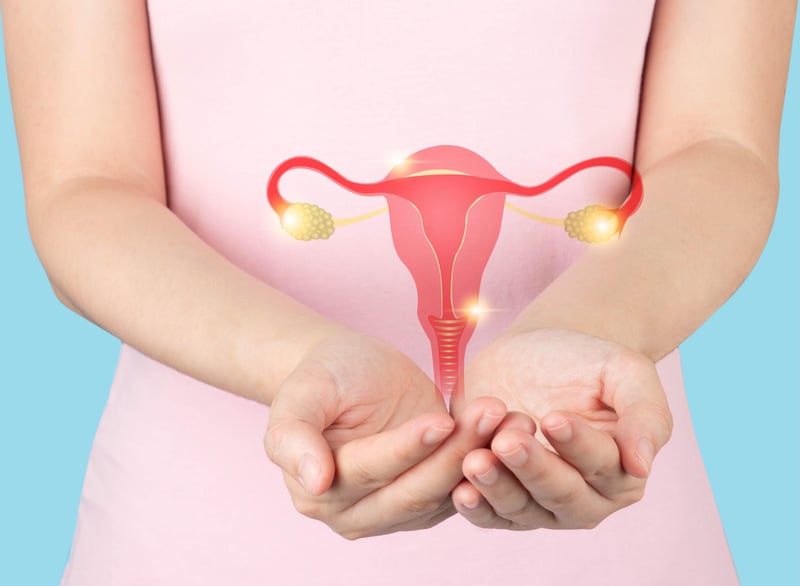Get Healthy!

- Cara Murez
- Posted February 1, 2023
Even When at Low Risk, Some Women Should Remove Fallopian Tubes to Avoid Ovarian Cancer: Experts
More women, even those at low risk for ovarian cancer, who have finished having children should have their fallopian tubes removed as a precaution to prevent the deadly disease, a leading research group has advised.
In new guidance released this week, the Ovarian Cancer Research Alliance urged women who do not have mutations that put them at high risk for ovarian cancer to have their fallopian tubes removed if they've finished having children and are already planning a separate gynecologic operation. Evidence suggests that most ovarian cancers, particularly aggressive ones, actually start in the fallopian tubes, the alliance noted.
Doctors already urge those at high risk to have their ovaries and fallopian tubes (known as a salpingo-oophorectomy) removed after they are done having kids.
"Ovarian cancer is a relatively rare disease, and typically, we don't message to the general population,"Audra Moran, president of the alliance, told The New York Times. "We want everyone with ovaries to know their risk level and know the actions they can take to help prevent ovarian cancer."
One issue is that no reliable screening test exists for ovarian cancer: Imaging scans and blood tests for early detection did not save lives in a large clinical trial conducted in Britain.
And although women are advised to be aware of symptoms, such as bloating, it's not clear that's actually effective, the alliance said.
Opportunistic salpingectomy, which means removing the fallopian tubes if a patient is already having a pelvic surgery, is standard practice in British Columbia, Dr. Dianne Miller, who was formerly the leader of gynecologic cancer services there, told the Times.
"Fifteen years ago, it became apparent that the most lethal and most common kinds of high-grade cancers actually had their origin in the fallopian tube rather than the ovary, and then spread very quickly,"Miller explained.
Removing just the tubes is a "win-win"situation for those at average risk of ovarian cancer, Miller noted, because keeping the ovaries can help with brain and heart health, even after menopause.
"I remember the light-bulb-going-off moment that many of these cancers are likely preventable, because a lot of women have a surgery at some point for hysterectomy, or removal of fibroids, or tubal ligation,"Miller explained.
Moran suggested that young carriers of genetic mutations that increase their risk for breast and ovarian cancers may want to remove only their tubes at first to prevent early menopause. But also removing the ovaries is considered the gold standard, the Times reported.
The Ovarian Cancer Research Alliance is now offering free at-home testing kits for qualifying women, so they can find out if they carry the BRCA1 and BRCA2 gene mutations.
Genetic testing should be more accessible, said the Society of Gynecologic Oncology, which is endorsing the idea of removing fallopian tubes in women not at high risk who are having another gynecological operation.
"It is considered experimental,"Dr. Stephanie Blank, president of the society, told the Times. But "it makes scientific sense and has a lot of appeal."
"Removing the tubes is not as good as removing the tubes and the ovaries, but it's better than screening, which doesn't work,"Blank said.
Dr. Bill Dahut, chief scientific officer at the American Cancer Society, told the Times that, "There is a lot of good data behind what they're suggesting, showing that for folks who had that surgery, the incidence rates of ovarian cancer are less."
"If you look at the biology, maybe we should be calling it fallopian tube cancer and think of it differently, because that's where it starts,"Dahut added.
In the United States, ovarian cancer kills more women than any other female reproductive cancers, about 13,000 each year. About 19,710 women receive an ovarian cancer diagnosis each year, often at a very advanced stage, the Times reported. Survival rates are much lower than for breast cancer, which is diagnosed in 264,000 women and 2,400 men each year in the U.S.
"As oncologists, we have our eyes set on curing cancer,"Miller said. "But if there's one thing that's absolutely better than curing cancer, it's not getting it in the first place."
More information
The U.S. Centers for Disease Control and Prevention has more on ovarian cancer.
SOURCE: The New York Times







